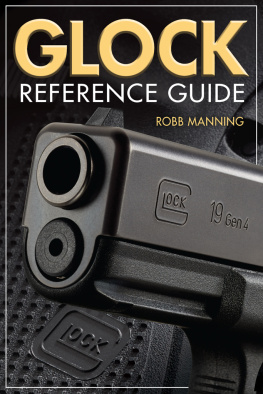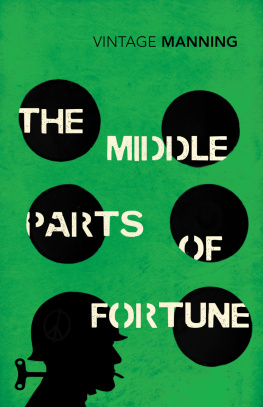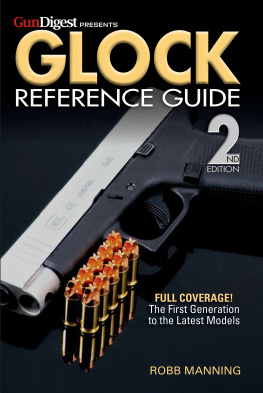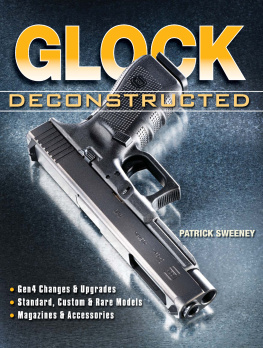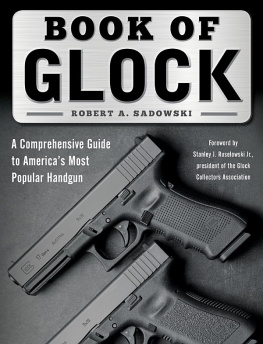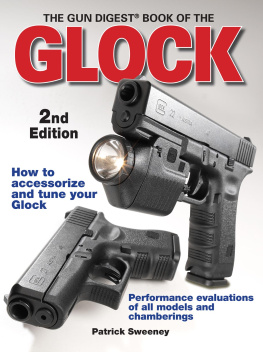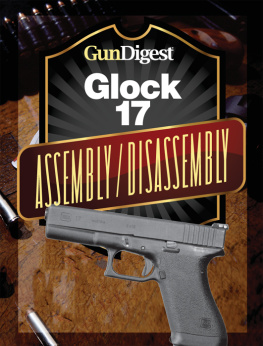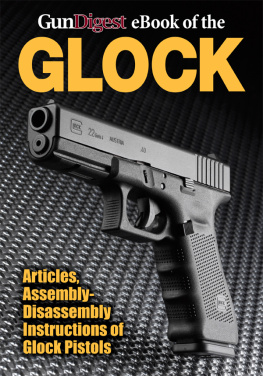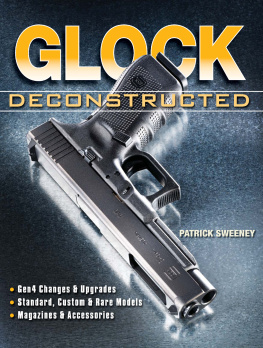Thank you for purchasing this Gun Digest eBook.
Sign up for our newsletter and receive special offers, access to free content, and information on the latest new releases and must-have firearms resources! Plus, receive a coupon code to use on your first purchase from GunDigestStore.com for signing up.
or visit us online to sign up at
http://gundigest.com/ebook-promo
I would like to first and foremost thank my Savior Jesus Christ, through You all things are possible. I also want to thank my wife, Ty, for putting up with me and my gun problem, and supporting me in my writing endeavors. Id also like to thank those in the industry who have helped my writing career along: Mark Olis, J.J. Reich, and Doug Howlett. Your advice and help networking have been instrumental. J.J., thanks also for the steady stream of ammo!
Id also be remiss if I didnt acknowledge the man who got me started in gun writing, the late Mike Strandlund. Back in 2010, I wrote him a long letter to the editor about an article written in one of the publications he was editor of, and he wrote me back, Your letter was great, do you want a job writing for us? The rest is history.
Glock is notoriously hard to work with and get answers out of, and while this hasnt changed much, and there are some questions Glock wouldnt answer, there are three people at Glock who helped me immensely. They went above and beyond to help me get most of the answers I needed and/or product in my hand to test. Thank you Kie, Connie, and Eric.
TABLE OF CONTENTS
INTRODUCTION
A NOTE FROM THE PUBLISHER: Just as this book was going to press in March of 2015, Glock announced the G43, a new, single-stack 9mm. For author Robb Mannings exclusive review of the G43, please go to http://www.gundigest.com/glock-reference
When Glock pistols burst onto the scene, very few pistols on the market could do what the Glock did: excel out of the box.
The debate about polymer is over, or at least it should be. Polymer is the material of the era, and test after test has shown it to be as strong and as durable as metal in many applications. About the only thing metal is better at is being subjected to the high pressures associated with a cartridge being fired. Yes, most metals have a higher melting point, but polymer has a far higher melting point than what your skin can stand, even through a glove, and the firearm has to be held in order to be fired.
I still hear people say, steel or nothing in regard to their choice in firearms. Hey, I love all firearms whether they are made of polymer, alloy, steel or whatever. To each their own. I have steel handguns in my safe, and I love to shoot them. Some I might even carry on occasion. But to say steel guns are better than polymer guns is like saying the all-metal cars of yesteryear are better than the mostly plastic cars of today. We can all get nostalgic for old cars, and I think theyre great, but as for reliability, safety and function, they cant compete with todays cars. Theyre not even in the same league. Ive seen crash tests comparing old metal cars to new ones and it throws conventional thinking out the window.
Its the same way with guns, all-metal handguns are great, but when it comes to out-of-the-box reliability, safety and function, polymer handguns have them beat. Im sure this will torque some people off, and Im going to preface it by saying Im a John Moses Browning devotee and love the 1911 handgun. If you want a great shooting range pistol and maybe even a competition gun, the 1911 is fine. If you want a fighting gun, buy a Glock.
Im quite sure Browning would agree if he were still alive. He was a genius firearm designer whose innovations were ahead of their time. Which is why if he were still alive he would be designing polymer pistols.
Ive heard some people argue that the only reason companies make polymer guns is to save money. While polymer certainly is cheaper to produce than metal, the polymer used to make handguns has many qualities that are superior to metal. I know this is sacrilege, and those same people wouldnt admit it, but it is true. For one, a polymer frame absorbs recoil better. It just does. This makes for better handling, especially in follow up shots. Second, it allows for more rounds to be crammed into the magazines that are fed into the grips. The walls of a polymer grip are much thinner compared to the metal frame with plastic grips attached to it. Third, its lighter, which makes for more comfortable carry - especially if you carry all day every day.
One top of that, if polymer is cheaper to produce and some of those savings get passed on to me, thats even better. If Glock were an all-metal handgun with the same features that it has now, it would easily be an $800 to $1000 gun. One only need look at the SIG line of metal pistols versus their polymer pistol to back this claim. If one compares out-of-the-box reliability and function of a Glock to that of the various 1911s on the market, who knows what the price would be? Ive owned 1911s, and Ive been around them, and up until recently, you couldnt get one for a reasonable price with the reliability of a Glock. Eats through anything? Hardly. Maybe most hardball/FMJ, but getting one to feed reliably with hollowpoints wasnt something you would come by cheaply.
I bought my first handgun back in 1993, a Government Model 1911, for $320 at the Base Exchange on Marine Corps Base (MCB) 29 Palms. Aside from crappy magazines, it ate hardball ammunition like it was going out of style, but I dont think I ever could get one full magazine of hollowpoints to feed through it. With that handgun, my method of carry was a hollowpoint in the chamber with the rest of the magazine filled with hardball. I knew the first round would do some damage, and the follow-up rounds would at least feed reliably. In the last few years Ive spent a lot of time with Rugers SR1911, and have been very impressed at how reliably it feeds all sorts of ammunition. Still, at around $800 - and Ruger has a reputation for being very reasonably priced - its far more expensive than a Glock, and its still not quite as reliable. Most 1911s are priced at well above a thousand dollars and theyre nowhere near as reliable as a Glock.
Over the course of this book, I have fired every model that Glock makes, except the G18 and G17L. Most models I have fired in both Gen4 and Gen3, and in the Short Frame models where offered. I have fired a lot of Glocks. And Ive fired a lot of ammo through them, over 1000 rounds. Most of that ammunition has been from Federal, because thats what I prefer, but I have used ammo from all major manufacturers, plus some really good small manufacturers. My point in mentioning all of this is that after putting a lot of ammo through a whole bunch of Glock pistols, I have concluded that you can pull any Glock out of its box, put any brand or type of the appropriate caliber into it, and it will fire every time you pull the trigger. And it will last a long time, regardless of how you treat it.
I never thought I would say this, and I wouldnt say this about any other pistol on the market: I could pull a Glock out of the box, load it, and carry it for personal protection without even test firing. Thats how much confidence I have in Glock pistols. Now, I wouldnt necessarily do that if I didnt have to, its always better to shoot any handgun before relying on it for protection. But if I had to, I would feel comfortable doing it.

